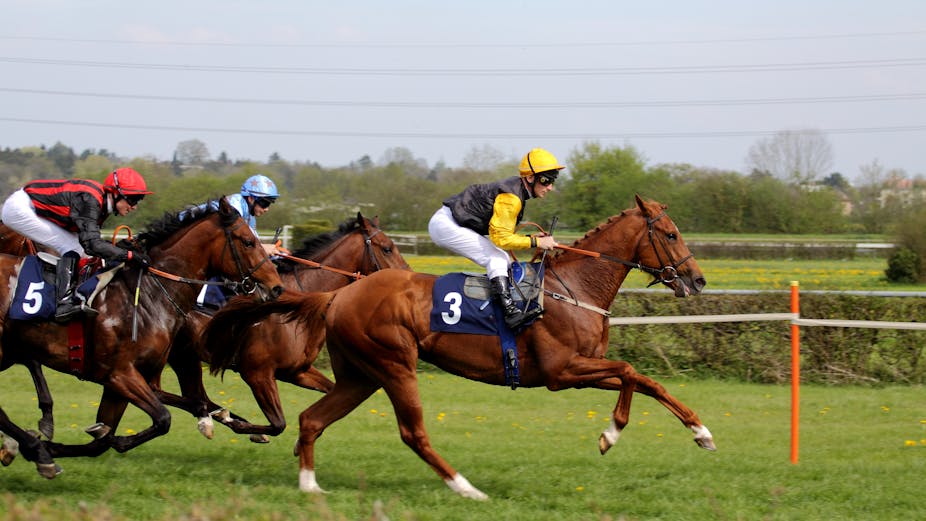Scientists have confirmed a pattern that many inveterate racing fans may have suspected for years: British horses are getting faster. But whether that is down to breeding techniques or other factors is less certain. The researchers suggest that one way to find out would be to carry out a detailed analysis of thoroughbred pedigrees to examine whether speediness is inherited.
Researchers from the University of Exeter’s Penryn Campus analysed the racing speeds of nearly 70,400 horses competing as long ago as 1850 – when detailed records were first collected. The results reveal that some types of horses – sprinters running five to seven furlongs – may be moving nearly 13% faster than their predecessors. Over the past 15 years alone, short-distance racehorses have increased their speed by approximately 0.11% per year, which corresponds to gains of 1.18 seconds, or more than seven horse lengths.
The massive dataset comprises results from more than 616,000 races run in the UK between 1850 and 2012. They set out to resolve contradictory patterns reported by previous studies. In particular, they were curious about the fairly widespread belief that horses are approaching a speed plateau. This seems counterintuitive given that speed appears to be passed down through the generations; breeders have long worked hard to preserve and enhance this trait in thoroughbred lines.

Previous studies have predominantly focused on results from middle- and long-distance elite races (eight to 12 and 14 to 20 furlongs, respectively), but the current dataset also looks at sprint competitions (five to seven furlongs). It also takes into account variations in environmental conditions that can influence horse performance, such as the course, ground softness and the number of runners in the race.
Although the improvements in speed were most noticeable for sprinters, small increases were also seen among middle- and long-distance runners. However, year-on-year changes have not been consistent over time. Changes to riding style appear to be responsible for dramatic improvements in performance during the early 1900s and in the final quarter of the 20th century.
The first period of rapid improvement seems to have resulted from jockeys’ shortening their stirrups and crouching while riding. The second also seems to be caused by further shortening of the stirrups. However, increased commercialisation of the sport during the latter half of the 20th century may have led to an influx of imported horses who improved the quality of the thoroughbred gene pool.
Horses and jockeys
Despite this potential connection between genetics and speed, the researchers are cautious about declaring that decreases in racing time are a direct result of human breeding practices. There are potentially confounding factors – such as individual jockeys’ racing techniques – that they were not able to consider in the study. In addition, the field does not currently have enough information on equine genetics to fully understand the impact of horse husbandry techniques on thoroughbred racing performance. The authors suggest that this could be rectified by a detailed analysis of thoroughbred pedigrees.

Alastair Wilson, the co-author of the study, said:
By analysing the performance data in conjunction with knowledge of how horses are related to each other, we should be able to determine just how important genes are for determining speed, and whether the genetic makeup of the thoroughbred population is changing through time.
But in the meantime, don’t expect sprinters to slow down any time soon. Middle- and long-distance runners may be nearing their maximal speeds, but short-distance racers could continue to break records for years to come.

